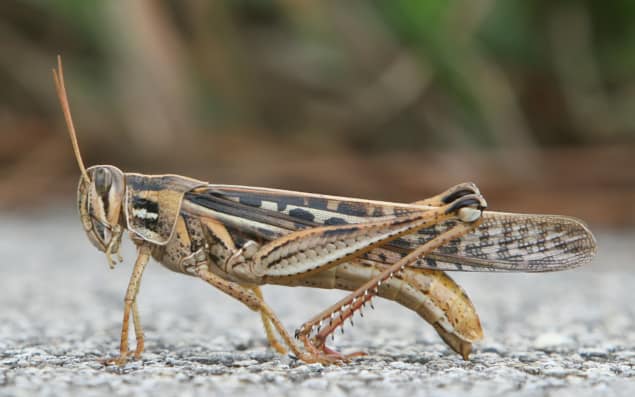
A few years ago, the physicists Olga Goulko, Damián Pitalúa-García and Adrian Kent proposed the grasshopper problem. Think of a grasshopper that hops a fixed distance in a random direction. If the grasshopper begins at a random position on a lawn, which shape of lawn has the highest probability of retaining the grasshopper?
It turns out that the answer is not a circle or other simple shape, but rather a rich variety of different shapes at different jump sizes. What is more, the work provides useful insight into Bell-type inequalities relating probabilities of the spin states of two separated quantum-entangled particles.
Now, Goulko and Kent have teamed-up with Dmitry Chistikov and Mike Paterson at the University of Warwick to look at the grasshopper problem on a sphere. Again, they found that a variety of shapes emerged as solutions depending on hopping distance. A Bloch sphere is a geometrical representation of the state space of a single quantum bit – so, once again the research provided insights into entangled particles.
Polymer coating
Humans have been making red bricks for thousands of years, but Julio D’Arcy and colleagues at Washington University in St. Louis are probably the first to think of using the near-ubiquitous building material to store electrical energy. By coating the bricks with a conducting polymer, they created a supercapacitor. To demonstrate their device, they used it to power a LED. The team suggests that walls of brick supercapacitors could be used to store energy.
The game of jail dodgeball involves players on two teams throwing balls at each other. When a player is hit, they leave the court of play and move to an adjacent “jail” area. Jailed players can re-join the game if they catch a ball that has been thrown out of play. A team wins when all their opponents are in jail.
Now, Perrin Ruth and Juan Restrepo of the University of Colorado at Boulder have studied the game as a complex system using several mathematical techniques. Writing in a preprint on arXiv, they say their analysis reveals a “rich landscape with different game dynamics occurring depending on the strategies used by the teams, which can in some cases be mapped to scenarios in competitive species models”. Ruth and Restrepo also say that they have used mathematics to “construct a strategy to increase the probability of winning”. I am looking forward to testing this out when our Scout troop can meet again – dodgeball is one of our favourite games.



